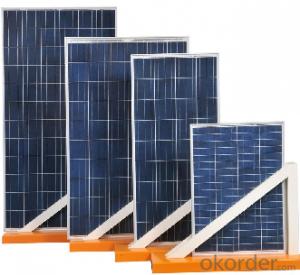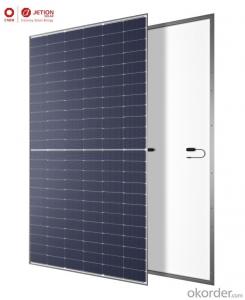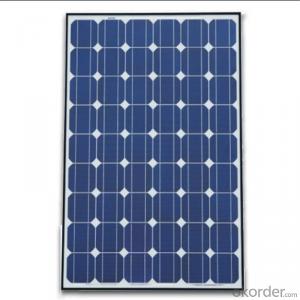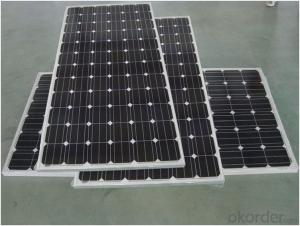Seraphim Solar Panels Jetion Solar Photovoltaic Panels Half Cell 360W Home Use Solar Panel OEM
- Supplier:
 Jetion Holdings Limited
Jetion Holdings Limited
- Loading Port:
- China main port
- Payment Terms:
- TT OR LC
- Min Order Qty:
- 806 pc
- Supply Capability:
- 500000 pc/month
OKorder Service Pledge
Quality Product, Order Online Tracking, Timely Delivery
OKorder Financial Service
Credit Rating, Credit Services, Credit Purchasing
You Might Also Like
As a member of CNBM - a Fortune 500 company, Jetion Solar provides various product solutions, global EPC service and nancing. Its standard and high-e ciency product o erings are among the most powerful and cost-e ective in the industry. Till now, Jetion Solar has cumulatively more than 10 GW module shipment and 1 GW global EPC track records.
Structural characteristics
| Component size | 1755x1038x35mm |
| Weight | 20 kg |
| Battery | Mono 182 mm (2 x78pcs) |
| Glass | Coated, 3.2mm toughened glass, low iron |
| Frame | Anodized aluminium alloy |
| Junction box | IP68 |
| Output wire | 4.0mm², wire length: 1200mm for positive and negative poles |
| Connector | MC4 compatible |
| Mechanical load | Front maximum: 5400Pa;Back maximum: 2400Pa |

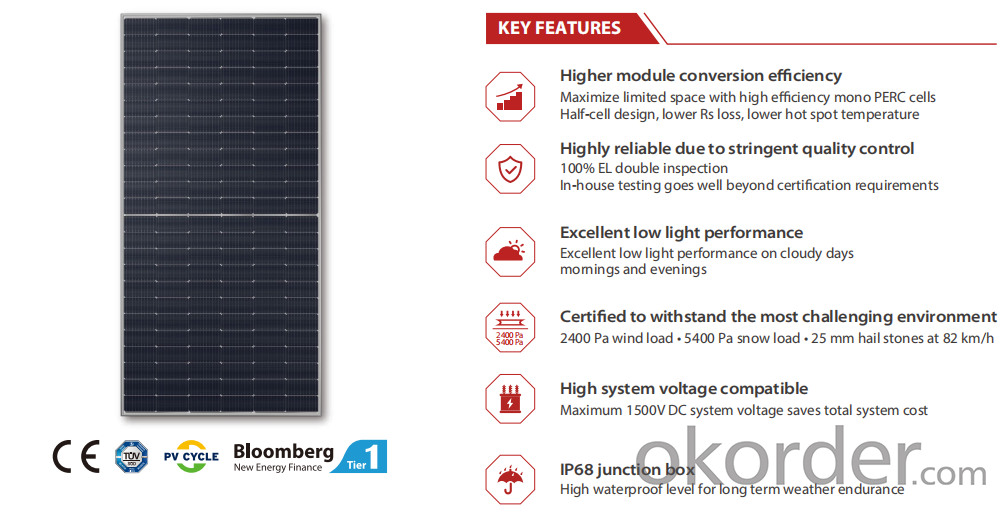




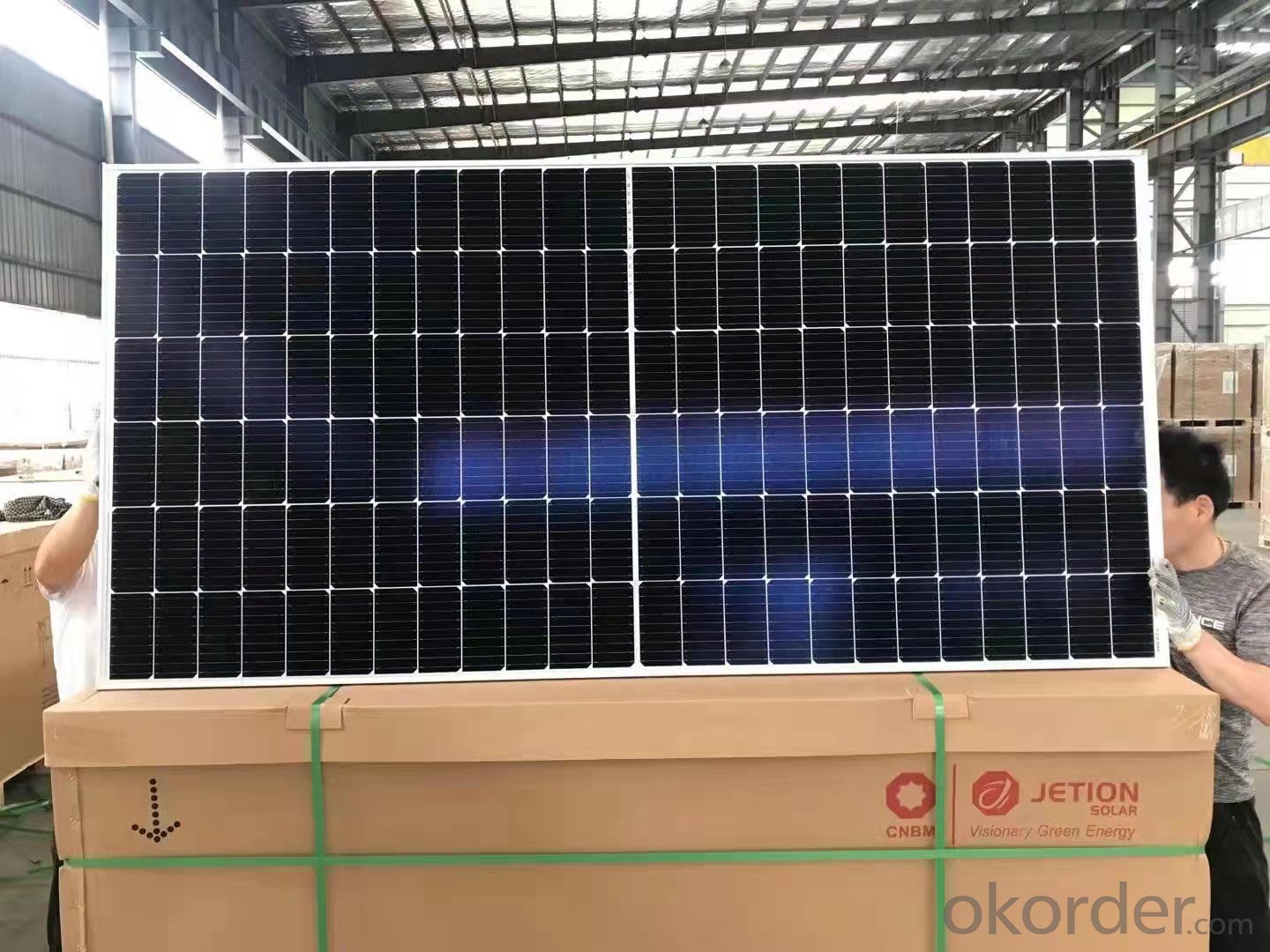
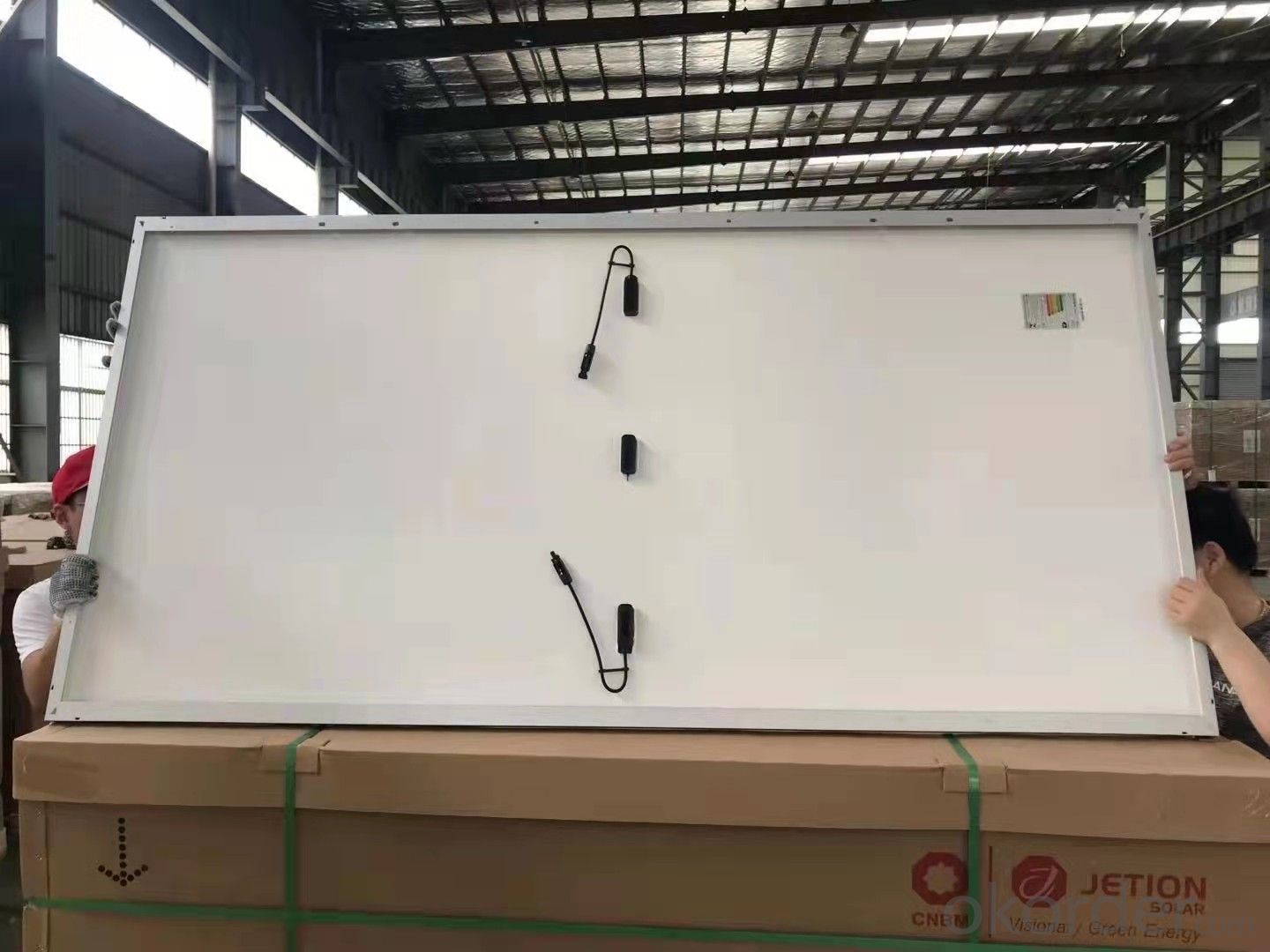
- Q: For a computer technology project we are using solar panels and trying to see different methods that will increase the output of solar power from these panels. For now, we have got polymer stickers and mirrors. Are there any more methods, or information that increase the solar power? Please and thank you :)
- I agree with the other answers; . Different angles to attract more light. 2. Cooling the panels. Just make sure you have a control set up. As for the cooling I'd say if the aim was overall energy efficiency then this method would not work unless you could devise a cooling method that didn't use any electricity.
- Q: Can solar panels be installed on a military vehicle or equipment?
- Yes, solar panels can be installed on military vehicles or equipment. In fact, many modern military vehicles are being equipped with solar panels to harness renewable energy for various purposes, such as powering communication systems, electronics, and auxiliary equipment. This helps reduce reliance on traditional fuel sources and increases the operational efficiency and sustainability of military operations.
- Q: I want to build a solar panel
- Homemade okorder /
- Q: When you get solar panels do you connect them to the grid?
- Not directly and it also depend on where you live. If where you live has net metering then they would be indirectly connected to the grid, there is equipment involved besides just the panels on the roof.
- Q: I have seen DIY software which explains everything for novices. Specifically, how to build your own solar panels and tie them into your home electrical system for about $00 in parts.Has anyone tried doing this? Was it easy?
- Hi Mitch, Yes they are legitimate ans so much so the government will actually help you pay for them. Someone has already mentioned if you purchase them from your local solar panel installer they will not be cheap.They have come down in price a lot over the last couple of years. Yes you can build your own and no its not too difficult.You need to know in your own mind whether you just want to reduce your utility bill or come off the grid completly. The best solution is a combination of wind and solar power and yes you can build your own windmill as well and at the bottom her I will show you where to go to get easy non technical plans. Naturally the sun does not shine at night so your solar panels would not work then but windmills function 24/7 as long as there is wind. If you have nearby neigbours please be aware windmills do make some noise which might upset your neighbours and of course see if you need planning permission from the town. The solar panel plans show you how to set an 80w solar panel which of course would not be able to power your whole house,but once you have built one why not build loads more and each one will get easier to build. Wish you all the best.
- Q: my solar panel is 5v 50 mA, and im making iphone USB charger so i need to connect + with 00 ohm resister and to data - and + so what resister will be okay..?
- Just connect the 5 volts out of the panel directly to the iphone via an USB connector. BUT, is the panel output always 5 volts, ±0.25 volts? Because that is the USB specification, and anything outside of those values could damage your iphone. And solar panels are known for their wide swings in voltage. Bottom line, resistor not needed, and you need to be positive you supply the correct voltage to the iphone. Best way to do that is to start with a solar panel that puts out at least 7 volts and use a LM7805 regulator. The only resistors needed are those to tie the data lines into a certain combination of resistance and voltage so that the iphone is fooled into thinking that a proper USB is connected. That would NOT involve a 00 ohm resistor. Search online for the proper values and connections. edit: are you repeating your same inane question with a different account? That is totally against the rules and could get you suspended.
- Q: Can solar panels be installed in areas with high winds?
- Yes, solar panels can be installed in areas with high winds. However, it is crucial to consider the design, installation, and maintenance of the solar panel system to ensure its durability and stability in such conditions. Reinforcements and proper anchoring techniques can be employed to withstand the wind load and prevent any damage to the panels.
- Q: Can solar panels be installed on senior living facilities?
- Yes, solar panels can be installed on senior living facilities. Installing solar panels on senior living facilities can help reduce energy costs, promote sustainability, and provide clean and renewable energy for the facility. It can be a beneficial and cost-effective solution for senior living facilities to meet their energy needs while also contributing to a greener environment.
- Q: Can solar panels work in cloudy weather?
- Yes, solar panels can still generate electricity in cloudy weather. While their efficiency may be slightly reduced, they can still convert sunlight into usable energy even when the sun is not fully visible.
- Q: i really need to know howbecause im building a solar powered car for science fair :]thank you!
- Hehe, if you want to build your own solar panel that looks like what you see on buildings, etc, you will probably need to be a multi-millionaire. Here is a quote from the first link in my sources list: The high-efficiency solar cells you can buy at Radio Shack and other stores are made from highly processed silicon, and require huge factories, high temperatures, vacuum equipment, and lots of money. But fortunately for you, there is a cheap way to make a solar panel yourself (see first link). I love the scitoys website, but I am not quite familiar with this particular experiment. It looks like a science fair project in itself! It also doesn't appear to put out nearly enough power to run even a small solar car. What I would recommend is buying a compact solar panel from Radio Shack or some other electronics store that you may know of. Type in solar in to the Radio Shack search box. The first item on the list may be useful to you (the solar panel battery combo). I am just guessing, though, since I don't know any of your requirements (voltage output, power output, size, etc). Also, buyer beware. This particular product has a pretty bad customer review... but then again, I find that people are more inclined to leave a bad review than a good one. Good luck... -Ubi
Send your message to us
Seraphim Solar Panels Jetion Solar Photovoltaic Panels Half Cell 360W Home Use Solar Panel OEM
- Supplier:
 Jetion Holdings Limited
Jetion Holdings Limited
- Loading Port:
- China main port
- Payment Terms:
- TT OR LC
- Min Order Qty:
- 806 pc
- Supply Capability:
- 500000 pc/month
OKorder Service Pledge
Quality Product, Order Online Tracking, Timely Delivery
OKorder Financial Service
Credit Rating, Credit Services, Credit Purchasing
Similar products
Hot products
Hot Searches
Related keywords










